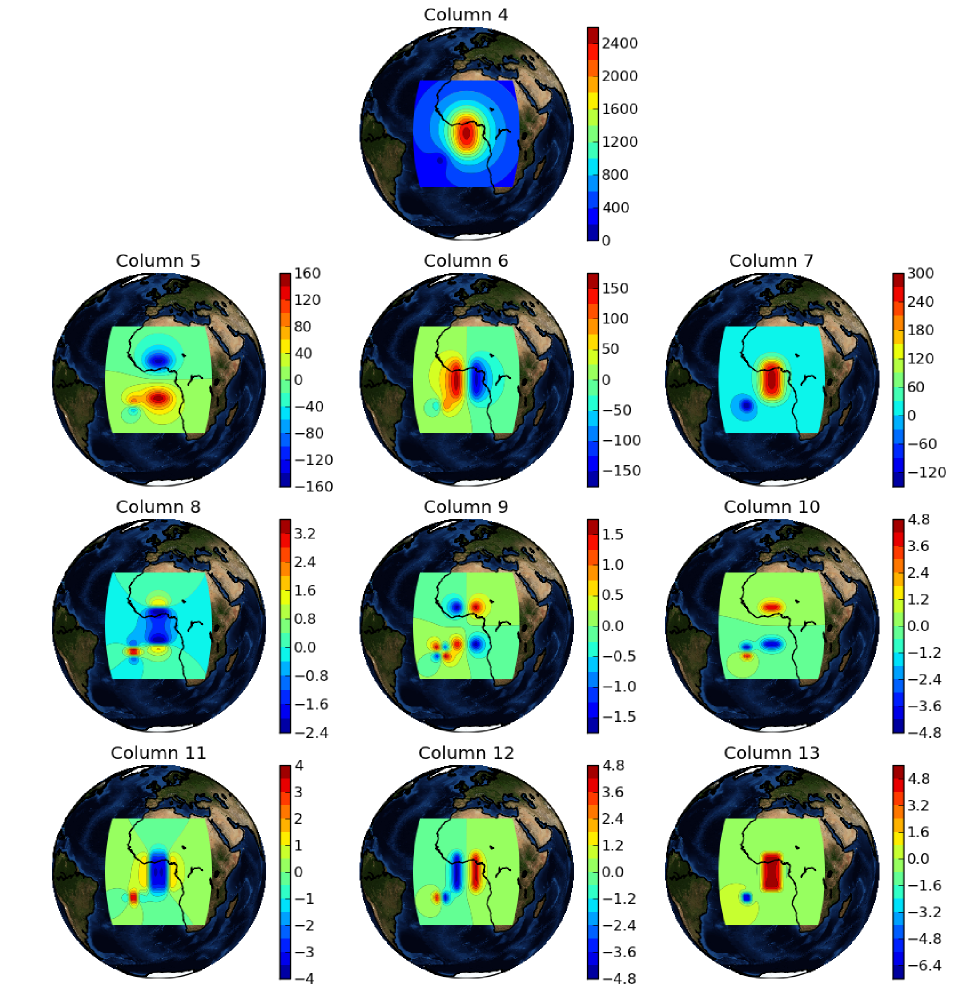Simple tesseroid model¶
The simple_tess.sh script calculates the gravitational potential, gravitational attraction, and gravity gradient tensor due to a simple tesseroid model:
#!/bin/bash
# Generate a regular grid, pipe it to all the computation programs,
# and write the result to output.txt
tessgrd -r-30/30/-30/30 -b50/50 -z250e03 | \
tesspot model.txt | \
tessgx model.txt | tessgy model.txt | tessgz model.txt | \
tessgxx model.txt | tessgxy model.txt | \
tessgxz model.txt | tessgyy model.txt | \
tessgyz model.txt | tessgzz model.txt -v -llog.txt > output.txt
Option -v tells tessgzz to print information messages (to stderr). Option -llog.txt tells tessgzz to log the information plus debug messages to a file called log.txt.
The model file looks like this:
# Test tesseroid model file
-5 5 -10 10 0 -50000 200
-12 -16 -12 -16 0 -30000 -500
You will notice that this takes considerably more time to compute than a simple 2 prism model. This is because Tesseroids has to recursively divide each tesseroid into smaller tesseroids in order to maintain the accuracy of the numerical integration. If you have a look at log.txt, you’ll notice that the 2 tesseroids were divided approximately 360,000 times in total. Don’t worry, this only happened because the tesseroids are extremely large.
The result should look like the following (“column” means the column of the output file).

Plot of the columns of output.txt generated by simple_tess.sh. Orthographic projection (thanks to the Basemap toolkit of matplotlib).